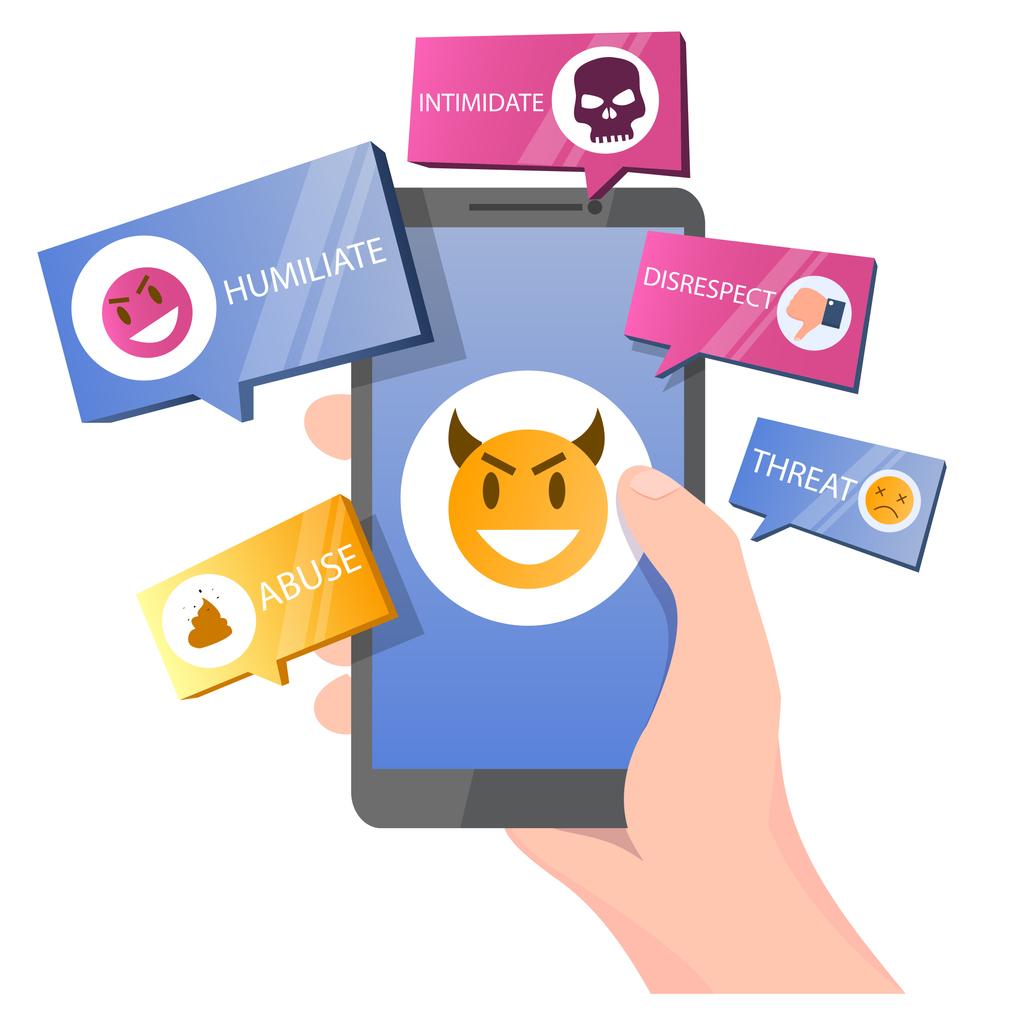
Key messages
- There are many kinds of cyberbullying - hurtful texts, image-based abuse, exclusion, imitating.
- About 50% of cyberbullying is by someone known in real life and 50% by someone met online.
- Cyberbullying is often unreported as young people fear having devices taken from them.
- Signs of cyberbullying and things teachers can do to help are listed.
Types of cyberbullying
Bullying is repeated behaviour by an individual or group with the intent to harm another person or group. Cyberbullying is when the bullying takes place online. It can involve social, psychological and even, in extreme cases, physical harm. 
Cyberbulllying can take place via:
- abusive texts and emails
- hurtful messages
- imitating others online
- excluding others online
- posting on social media about them
- spreading rumours
- posting images or videos online without their consent
- nasty online gossip and chat.
Technology and online engagement have become such an integral part of our daily lives that there is no real difference between our 'online' and 'offline' worlds now - bullying, is bullying. All bullying can cause shame, guilt, fear, withdrawal, social isolation, loneliness and depression. Cyberbullying has the added difficulty of being permanently available to see and read over and over, adding to the hurt and fear.
It can be hard to escape cyberbullying. Nasty messages, videos and gossip can spread fast online and are hard to remove completely. Screenshots and copies can be easily made and shared widely with others. This makes it easier for cyberbullying to spread quickly and uncontrollably.
Often, the abusers/attackers can remain unknown to the victim, as they use a fake or anonymous account to hide their identity. This can make it difficult to stop, and harder for adults to see and manage.

Facts about cyberbullying
- Approximately 50% of victims know their perpetrator (usually another student at same school).
- Approximately 50% of victims met their perpetrator online and did not know them.
- People of all genders can cyberbully.
- Girls cyberbullying behaviours are more likely to be spreading rumours.
- Boys are more likely to post hurtful pictures or videos.
- Most cyberbullying occurs amongst mid-teens (ages 14-17).
- Perpetrators of cyberbullying are generally the same age as the victim.1
- Only 7% of Australian secondary school students reported experiences of cyberbullying in the National Survey, although this number is estimated to be so low due to lack of willingness to report.
- The most common experiences of cyberbullying for Australian secondary students were being ignored or intentionally left out online, being prank called, and receiving nasty messages online or via text.2
Signs of a young person being cyberbullied
Reports from eSafety suggest that 1 in 5 young people (8-17 years old) have experienced cyberbullying, however, research shows students often don't tell an adult or report it1. They fear we will remove them from the internet or their devices, therefore disconnecting them from supportive friends and family, and may overreact and make the situation worse. There are some signs you might be able to pick up at school that indicate a child may be the target of cyberbullying. Look for:
- reluctance to go to school
- falling behind in school work and homework
- unexpectedly disinterested or stops using the computer, their phone, tablet, or social media's.
- becomes withdrawn, distressed, anxious or lacking confidence
- becomes aggressive and begins to bully other young people
- disturbed or deprived sleep
- appears to be depressed, angry or frustrated after computer, internet, or phone use
- mood swings
- becomes anti-social and isolated from peers and family
- higher levels of absenteeism
- increased negative self-perception
- a decline in physical health
- becoming secretive about their online activities and phone use
- suicidal thoughts—this should be reported to the administration and the parents/carers immediately for appropriate action.
Cyberbullying can happen to anyone, however often the young people involved in cyberbullying are also involved in other kinds of bullying.
Responding to cyberbullying
- If you notice a child in your class or the school yard showing any of the above signs, or other worrying and out of character behaviours, tell them you are worried and want to help.
- If they won't open up to you, recruit others to talk to them (another teacher, guidance officer or school counsellor).
- Keep a close eye on their interactions and ask other relevant staff to do the same, particularly at recess and lunchtime.

- If they seem disconnected from others encourage them to join lunchtime groups and recruit kind and supportive students to look out for them.
- If other students appear to be targeting them or excluding them, enact appropriate consequences as per the school's bullying policy.
- Any significant concerns should be discussed with the student and their parents or carers.
- Students should be provided with options for psychological support including school counselling or anonymous counselling through the Kids Helpline on 1800 551 800.
External resources
For teachers
eSafety Commissioner training - a range of online safety training programs free of charge for teachers and professionals.
Cyberbullying information for teachers, Office of the Children's esafety Commissioner
Bullying. No Way! - aims to create learning environments where every student and school community member is safe, supported, respected, valued and free from bullying, violence, harassment and discrimination.
Tagged - a video which encourages young people to reflect on the real life consequences of cyberbullying, sexting and a negative digital reputation.
For young people
Staying safe online, Kids Helpline - provides activities, resources and practical advice to help kids, teens, teachers and parents safely enjoy the online world.
ThinkUKnow - informative site for teens on cybersafety. Also has a 'report abuse' tab which is monitored by the Federal Police.
Cyberbullying, Legal Aid WA
References
1. Katz, I., M. Keeley, B. Spears, C. Taddeo, T. Swirski and S. Bates Research on youth exposure to, and management of, cyberbullying incidents in Australia: Synthesis report (SPRC Report 16/2014) Sydney: Social Policy Research Centre, UNSW Australia, 2014. https://www.communications.gov.au/publications/publications/research-youth-exposure-and-management-cyber-bullying-incidents-australia-synthesis-report-june-2014.
2. Fisher, C. M., Waling, A., Kerr, L., Bellamy, R., Ezer, P., Mikolajczak, G., Brown, G., Carman, M. & Lucke, J. 2019. 6th National Survey of Australian Secondary Students and Sexual Health 2018, (ARCSHS Monograph Series No.113), Bundoora: Australian Research Centre in Sex, Health & Society, La Trobe University.



